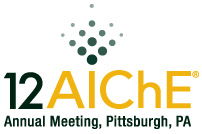

The asphaltenes contained in the tailings constitute valuable hydrocarbons that, if recovered, could be useable as coker feed or paving material. We conducted investigations of the feasibility of recovering asphaltenes from the tailings. Two methods were tested – solvent extraction and agglomeration. In solvent extraction, aromatic solvent is mixed with froth treatment tailings to dissolve the asphaltenes followed by centrifugation to remove the mineral solids and water. The experimental results demonstrated that more than 90% of the asphaltenes in the tailings can be recovered. The recovered asphaltenes contain only a small fraction of mineral solids and might be usable as coker feed. In agglomeration, the tailings are agitated at elevated temperature (80°C) causing the asphaltene particles to form large agglomerates that separate from the tailings to give an asphaltene-rich sediment phase and tailings that are almost asphaltene-free. The agglomerates still contain significant fractions of mineral solids and water and require further treatment.
